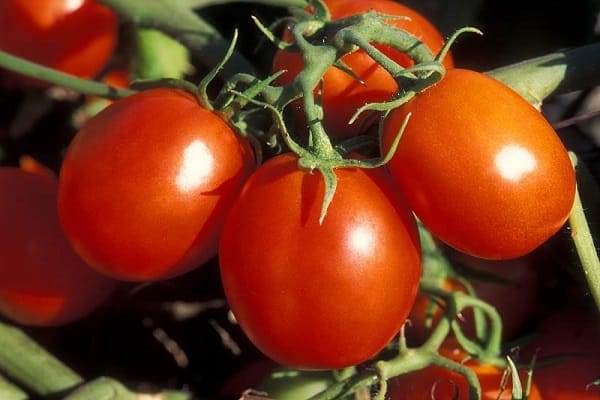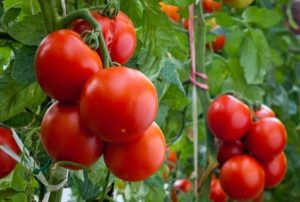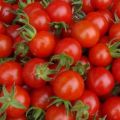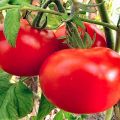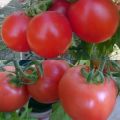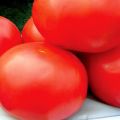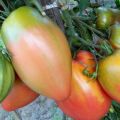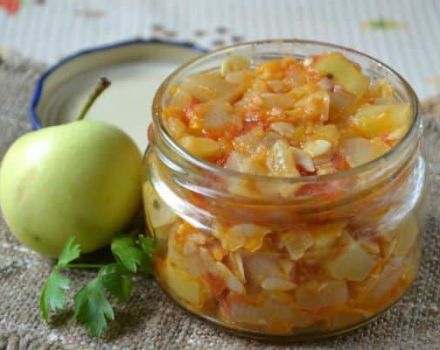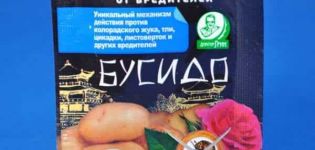Description of the Sharada tomato variety, its characteristics and productivity
Charada tomato is a pickling variety, one of the best examples of German selection, it tolerates the climatic conditions of the northern regions well. Suitable for growing in open field beds and for all types of greenhouses. Seed material is produced in St. Petersburg.
About the grade
Specifications:
- The ripening period is super early, less than 100 days pass from emergence to the first harvest.
- For the bushes of the Sharada variety, determinant growth is characteristic, they do not exceed 1 m.
- On average, the bushes are 60–70 cm high, stable under the weight of the crop, do not need support and tying, there is no need to pinch the bushes of this variety.
- The leaves are very small, which indicates a high drought tolerance of plants.
- The variety is resistant to diseases.
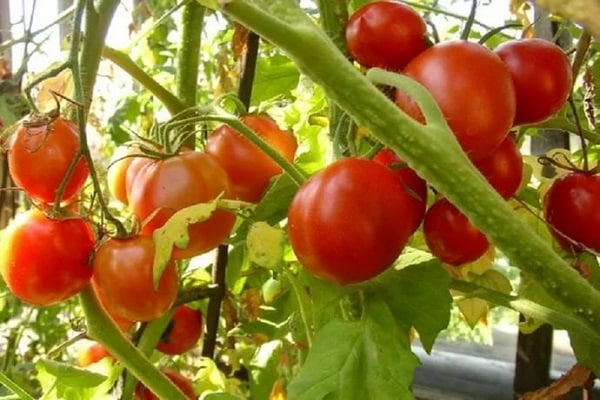
Given by the originator, the description of the fruits indicates that they have a plum-ovoid shape, weighing 80–95 g, smooth, red, very dense, there is a lot of pulp, more than 7 kg of fruit per square meter. The skin is thin and dense. Tomatoes have few seeds, there are only 2 or 3 seed chambers. Fruits are suitable for all types of whole-fruited canning, including in a state of milky-wax maturity. In late autumn they ripen well without loss of taste.
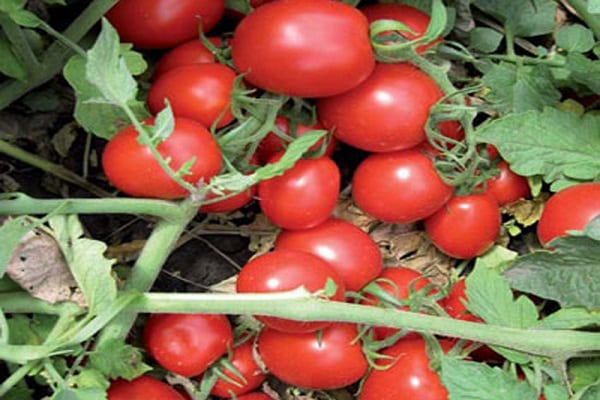
How to grow a Charade tomato with your own hands?
A very early tomato allows the use of cultivation technologies both through seedlings and in a seedless culture. Sowing seeds for seedlings, followed by planting in open ground, is carried out in the second half of March. If you plan to land in a film greenhouse, you can sow 1-2 decades earlier. Seedlings are dived at the age of one or two true leaves according to the scheme 8x8 or 10x10 cm. During the period of seedling growth, it is fed 2-3 times with humic fertilizers. Planting seedlings in open ground is carried out in late May or early June. If there is a threat of recurrent frosts, it is advisable to cover the tomato bed with a low-density covering material.

To obtain a seedless culture, sowing is carried out in late April - early May in rows according to the scheme 30x15. If the weather is cold, the crops should be covered with plastic wrap. When the plants reach the age of 2-3 true leaves, thinning is carried out in order to achieve a 30x30 cm pattern, removing the plants after one. The value of a seedless crop is that the plants form a deep taproot, getting more moisture and nutrients from the deeper layers of the soil.
Important! Tomatoes in seedless culture should not be transplanted.
Determinant tomato Charada varieties are responsive to loosening and light hilling of bushes. As the plants mature, the soil is mulched with straw, sawdust, and mowed lawn grass.Before watering and subsequent loosening, the tomato is fertilized with complex mineral fertilizers. At the beginning of the growing season, high doses of nitrogen are given, in the middle of the growing season, the proportion of phosphorus in the fertilizer is increased, and at the beginning of ripening, the proportion of potassium increases by 2–2.5 times. In addition to mineral fertilizers, it is advisable to fertilize the tomato with chicken manure or mullein infusion. Watering is carried out once every 5–7 days. Irrigation water should not be cold, otherwise the plants are stressed.

Valuable characteristics of Sharada tomato: amicable return of a very early harvest, plant resistance to pests and diseases, high drought resistance, the ability to withstand cold snaps without reducing productivity, excellent salting qualities. The reviews for this tomato are positive, even in the northern regions.
